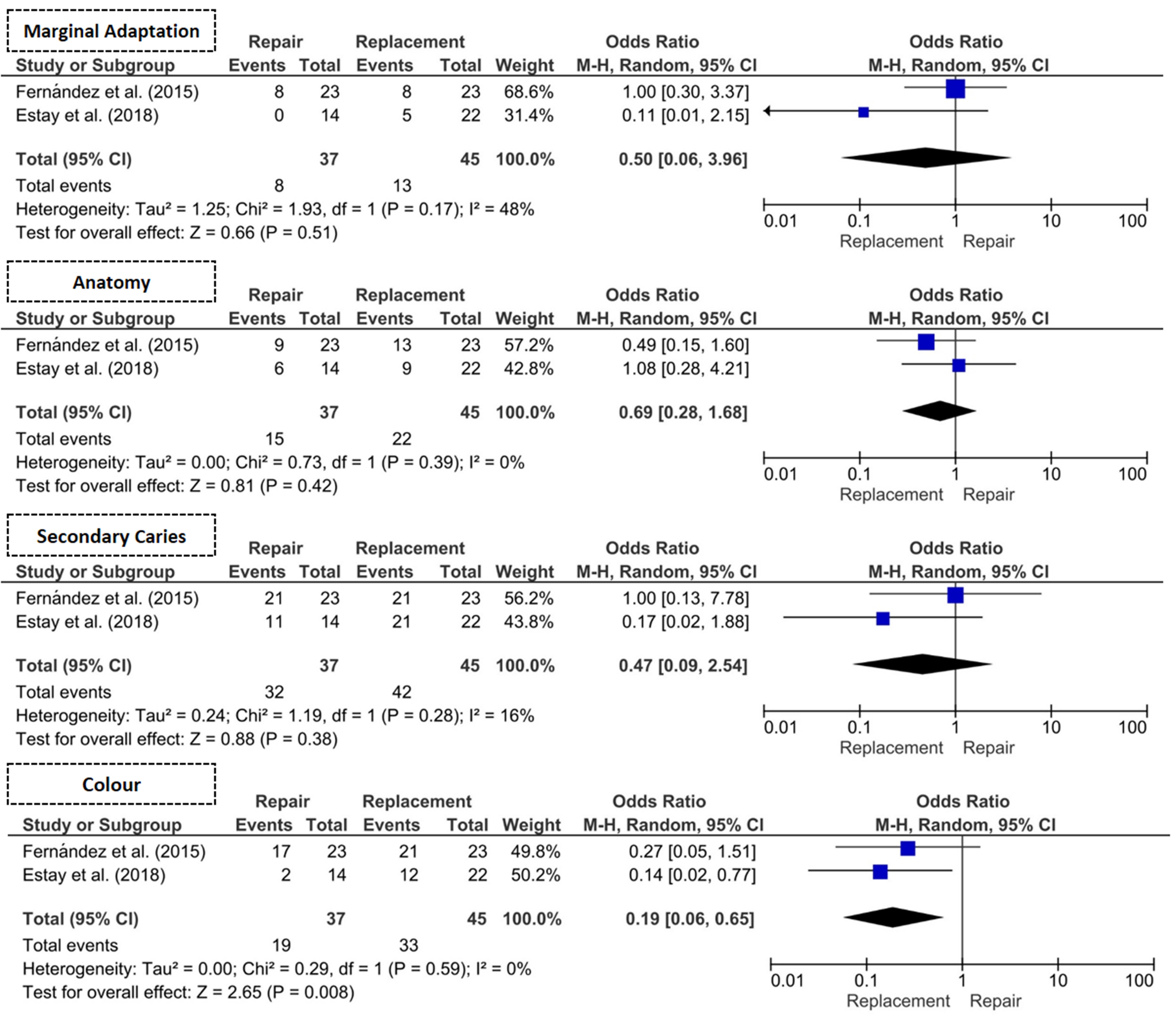Comparison of the Long Term Clinical Performances of Repaired versus Replaced Resin-Based Composite Dental Restorations: A Meta-Analysis of Clinical Trials
DOI:
https://doi.org/10.5281/zenodo.8306127Keywords:
Composite resins, Repair, Replacement, Meta-analysisAbstract
Objectives: When a composite resin restoration partially fails, dentists face the decision of replacing the entire restoration or repairing the affected area. This study aims to compare clinical outcomes between repairing and replacing dental composites through a meta-analysis of randomised clinical trials.
Materials and Methods: In June 2023, an extensive search across multiple databases (PubMed, Web of Science, Scopus, Cochrane Library, Open Grey) was conducted, focusing on marginal adaptation, anatomy, secondary caries, and colour of composite restorations. United States Public Health Service criteria-derived Alpha scores were examined, and odds ratios along with 95% confidence intervals were employed for comparisons. Data analysis was executed using Cochrane's RevMan 5.4.1 software (The Nordic Cochrane Centre, Copenhagen, Denmark).
Results: Only two studies met the eligibility criteria and were included in the analysis. Both studies were deemed to have a high risk of bias. Notably, no statistically significant differences emerged between the groups undergoing repair or replacement of composite restorations in terms of marginal adaptation (OR=0.50, 95% CI: 0.06, 3.96; p=0.51), anatomy (OR=0.69, 95% CI: 0.28, 1.68; p=0.42), and secondary caries (OR=0.47, 95% CI: 0.09, 2.54; p=0.38). However, the replacement group exhibited a higher OR when it came to colour (OR=0.19, 95% CI: 0.06, 0.65; p=0.008).
Conclusions: Both repairing and replacing dental composites exhibit comparable clinical outcomes for marginal adaptation, secondary caries, and anatomy. However, replacement offers improved color stability in long-term assessments. Nevertheless, due to study limitations, further research is essential to comprehensively ascertain the benefits of both approaches.

Downloads
Published
How to Cite
Issue
Section
License
Copyright (c) 2023 João Filipe Brochado Martins, Merve Utar, Fatma Pertek Hatipoğlu

This work is licensed under a Creative Commons Attribution-NonCommercial 4.0 International License.
CC Attribution-NonCommercial 4.0








